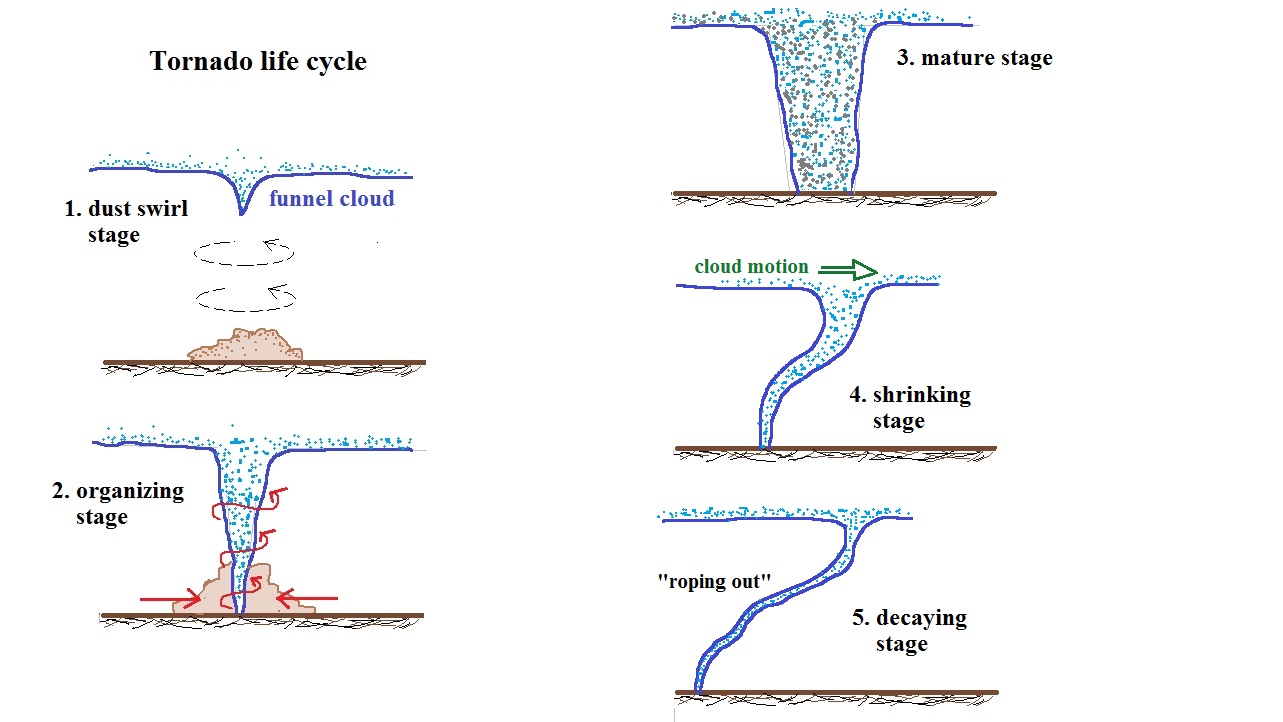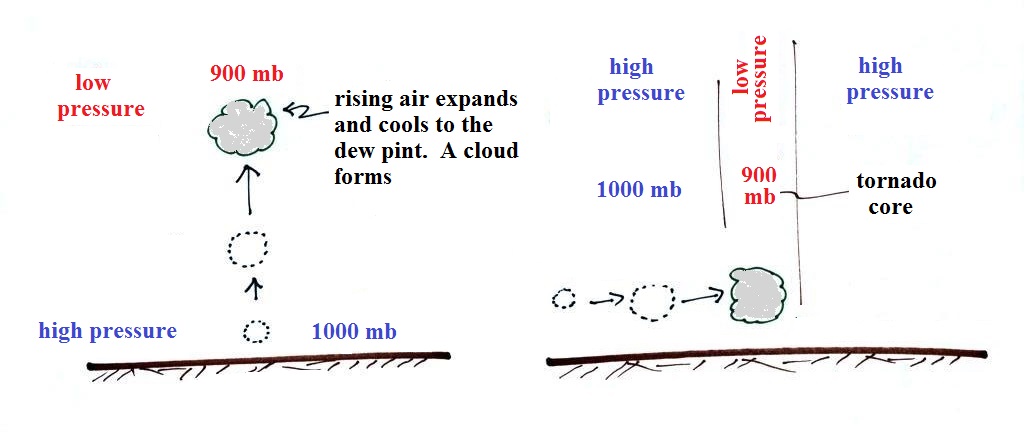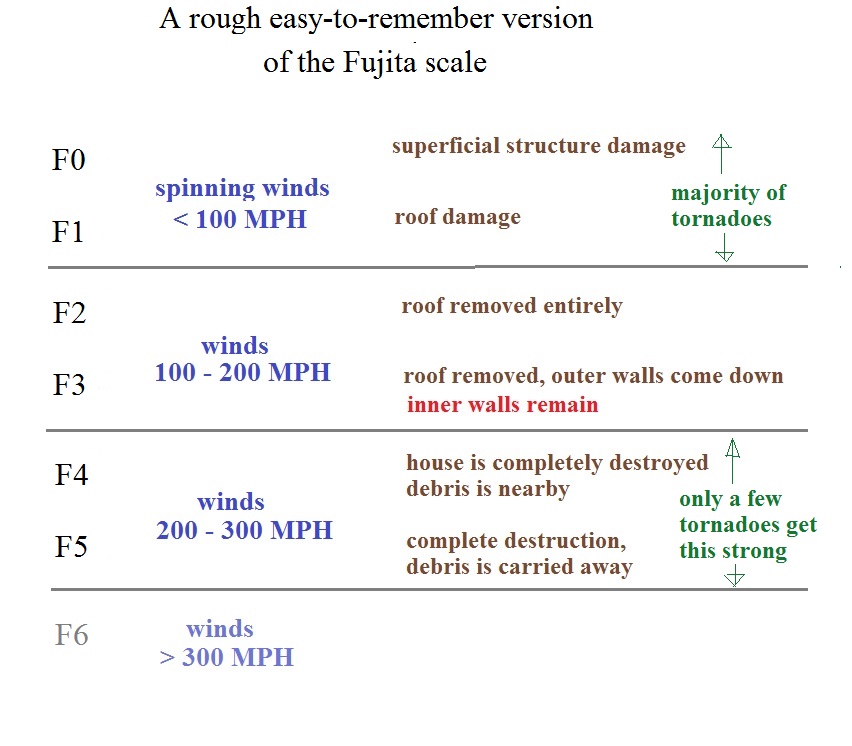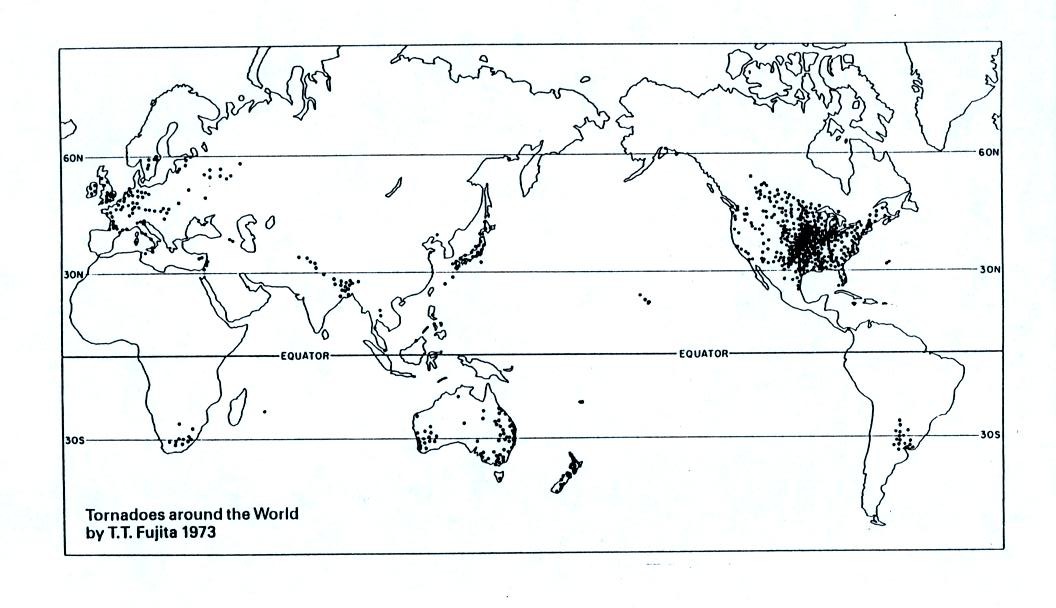

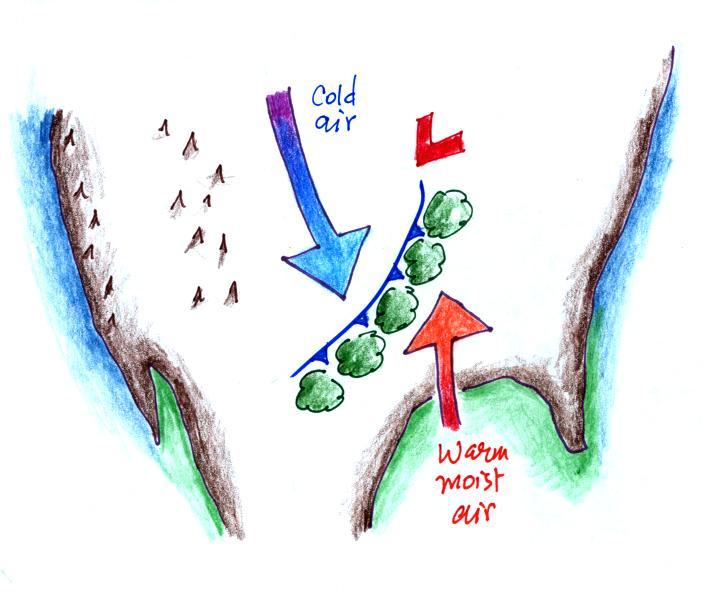
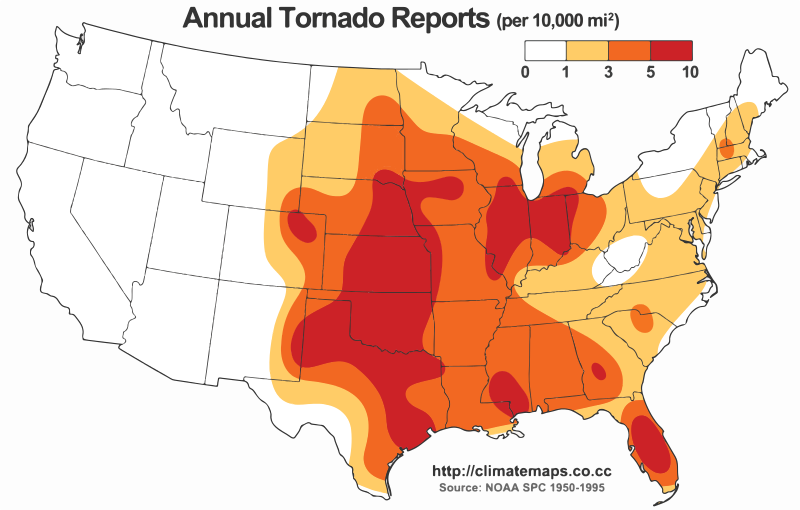 |
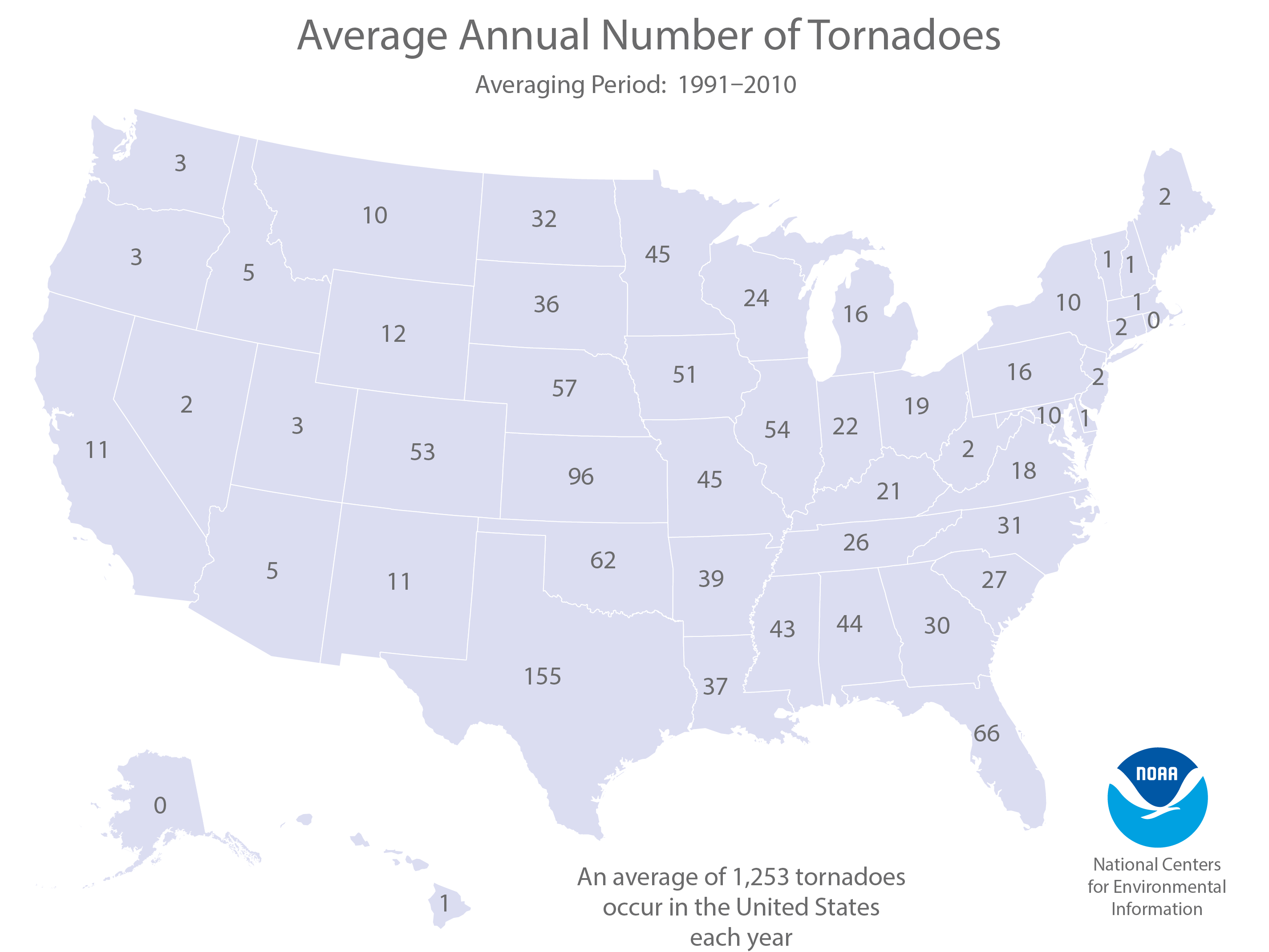 |
| This map,
created by Alex Matus and from a Wikipedia article
on tornado climatology (https://en.wikipedia.org/wiki/Tornado_climatology)
shows the average frequency of tornado occurrence
in the US. |
This map from the National Centers for
Environmental Information (https://www.ncdc.noaa.gov/climate-information/extreme-events/us-tornado-climatology)
shows the average number of tornadoes by state. |
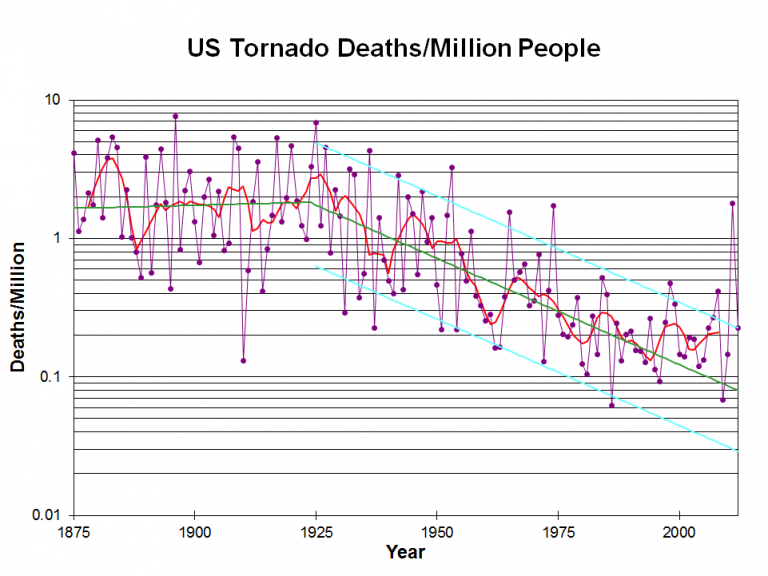
| Tornado
statistics for past few years |
||
| Year |
No. of confirmed
tornadoes |
No. of deaths |
| 2019
(ongoing) |
144 |
24 |
| 2018 |
1123 |
10 (record low) |
| 2017 |
1418 |
35 |
| 2016 |
976 |
18 |
| 2015 |
1178 |
36 |
| 2014 |
928 |
47 |
| 2013 |
903 |
55 |
| 2012 |
939 |
69 |
| 2011 |
1697 |
553* |
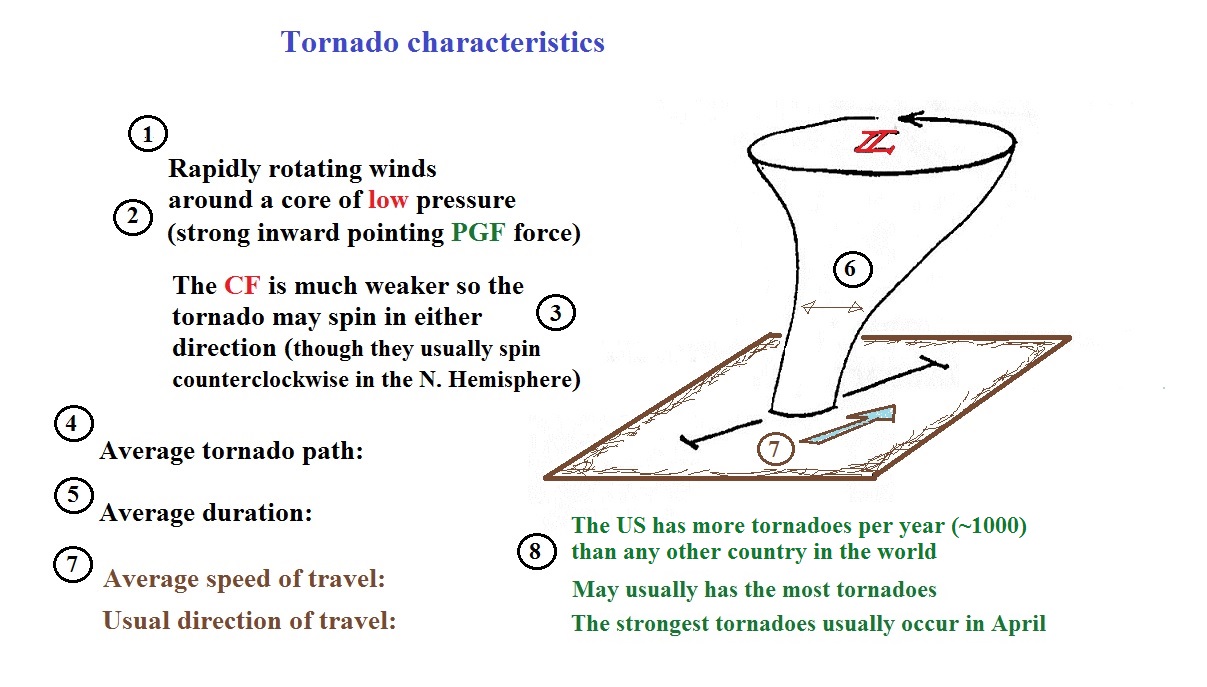
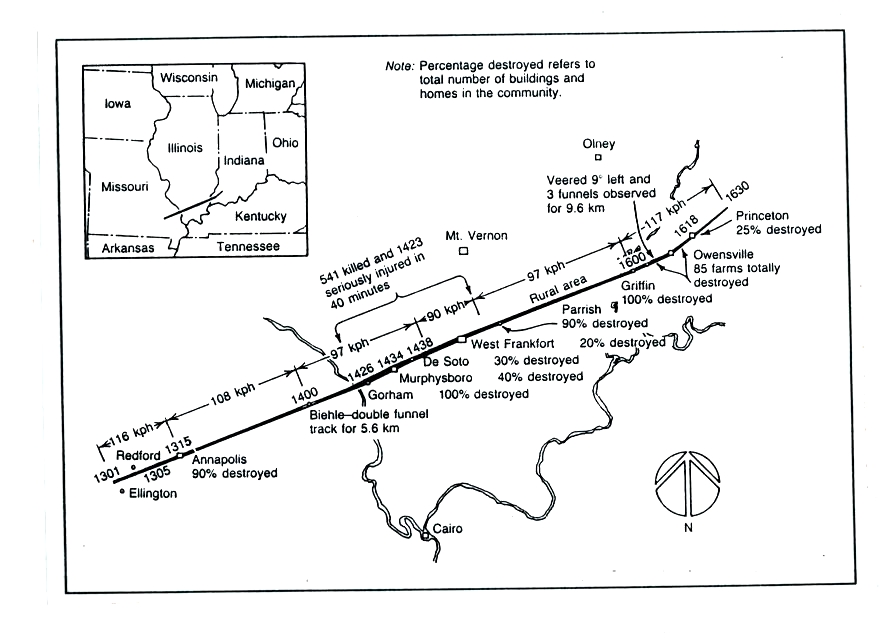
| Video ID |
Fujita Scale rating |
Location |
Date |
Comments |
| 54a |
F3 |
Grand Isle NE |
Mar. 13, 1990 |
tornado cloud is pretty thick and vertical |
| 61f |
F3 |
McConnell
AFB
KS |
Apr. 26, 1991 |
this is about as close
to a tornado as you're ever likely to get. Try to
judge the diameter of the tornado cloud. What
direction are the tornado winds spinning? |
| 52 |
F5 |
Hesston
KS |
Mar. 13, 1990 |
Watch closely, you may
see a tree or two uprooted by the tornado winds |
| 51 |
F3 |
North
Platte NE |
Jun. 25, 1989 |
Trees uprooted and
buildings lifted by the tornado winds. The online
video is longer than the one shown in class and has some
good closeup video. See especially the last couple
of minutes of the video |
| 65 |
F1 |
Brainard
MN |
Jul. 5, 1991 |
It's a good thing this
was only an F1 tornado |
| 57 |
F2 |
Darlington
IN |
Jun. 1, 1990 |
Tornado cloud without
much dust |
| 62b |
F2 |
Kansas
Turnpike |
Apr. 26, 1991 |
It's sometimes hard to
run away from a tornado. Watch closely you'll see a
van blown off the road and rolled by the tornado.
The driver of the van was killed! |
| 47 |
F2 |
Minneapolis, MN |
Jul. 18, 1986 |
Tornado cloud appears
and disappears. The online video compares features
seen in this tornado with one created in a laboratory. |
